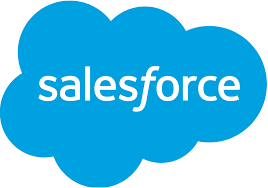From the towering skyscrapers of downtown Seattle to the lush green forests of Olympic National Park, Washington state is a land of contrasts. But it’s not just the natural beauty that sets this state apart. With its forward-thinking policies and progressive initiatives, Washington is a hotbed for transformation and innovation. From legalizing recreational marijuana to pioneering clean energy solutions, this state is constantly evolving and reshaping the way we live. In this article, we will explore how Washington’s ever-changing landscape is not only shaping the future of the state but also influencing national conversations on important issues. By visiting updatedwashington.com, you can ensure that you are informed about the latest news, events, and trends shaping Washington’s future. Don’t miss out on being part of this exciting transformation – stay connected with updatedwashington.com today!
The Transformation of Washington’s Political Landscape
Over the past few decades, the political landscape in Washington has undergone a remarkable transformation. Gone are the days of a predictable two-party system; instead, we now find ourselves amidst a shifting and multidimensional political arena. This transformation can be attributed to several factors, including changing demographics, technological advancements, and the rise of grassroots activism.
One key aspect of this transformation is the increasing diversity within Congress. As more women and people of color are elected to office, there is a growing recognition of previously marginalized voices. This shift brings with it fresh perspectives and new priorities that were largely ignored in the past. It signals a move away from traditional power structures towards a more representative democracy. Another notable change is how technology has revolutionized political campaigning and activism. Social media platforms have become powerful tools for public discourse and mobilization, allowing politicians to connect directly with their constituents like never before. This shift in communication methods has also led to greater transparency in politics as citizens demand accountability from their elected officials.
Historical Context: Shifting Dynamics in Washington’s Politics
In recent years, the political landscape in Washington has experienced a significant shift, marked by changing dynamics and evolving priorities. One of the key factors driving this transformation is the growing influence of social media and technology. Platforms like Twitter have altered the way politicians communicate, allowing for direct engagement with constituents and immediate dissemination of information. This shift has revolutionized political campaigning, putting pressure on lawmakers to craft concise and impactful messages that resonate with voters in a matter of characters.
Another pivotal aspect shaping Washington’s politics is the rise of grassroots activism. People are no longer content simply observing from the sidelines; instead, they are seizing opportunities to participate directly in policy-making through demonstrations, town hall meetings, and online petitions. Grassroots movements have surged in popularity as citizens mobilize around issues such as climate change or income inequality, demanding action from their elected officials. This groundswell has forced politicians to take notice and respond accordingly in order to maintain their base of support.
The Influence of Technology: A Game Changer
Technology has undoubtedly become a game changer in our society, reshaping almost every aspect of our lives. From communication to transportation, from healthcare to entertainment, technology has revolutionized the way we live, work, and interact with one another. One of the most profound effects of technology is its impact on information dissemination and access. With the rise of social media platforms and online news outlets, information has become more readily available than ever before. The power to share one’s thoughts and ideas with a global audience is now within the grasp of anyone with an internet connection.
Furthermore, technology has played an instrumental role in transforming industries such as education. With online learning platforms and virtual classrooms becoming increasingly popular, individuals can now pursue educational opportunities that were once impossible due to geographical limitations or time constraints. This shift towards digital education has democratized learning by making it more accessible and flexible for people from all walks of life.The influence of technology extends beyond individual empowerment; it also shapes the structures within which we live and work. For instance, smart cities are emerging as a new trend where technology is seamlessly integrated into urban planning to improve efficiency and sustainability. Traffic systems that adapt to real-time data or energy-efficient buildings controlled by automated systems are just some examples of how advancements in technology are transforming our physical environments.
Changing Demographics: Impact on Policy and Representation
Changing demographics have a significant impact on policy and representation in Washington. As the population becomes increasingly diverse, policymakers and elected officials must adapt to meet the needs and concerns of new communities. This requires understanding cultural nuances, addressing healthcare disparities, and promoting inclusivity in decision-making processes.
One consequence of changing demographics is the increased focus on immigration policies. With a growing immigrant population, there is a greater need for policies that provide pathways to citizenship, protect the rights of migrants, and ensure an inclusive society. Additionally, as marginalized communities gain political power through demographic shifts, policy issues such as systemic racism and income inequality are gaining more attention. Representation is also crucial in shaping policy outcomes. As demographic changes occur, it is imperative for policymakers to reflect the diversity of their constituents. Without representation from different racial, ethnic, gender, and socioeconomic backgrounds in decision-making positions, there is a risk of excluding important voices from discussions on critical issues like education reform or criminal justice reform.
Conclusion: Navigating the New Political Terrain
As we reach the conclusion of this exploration into the ever-changing political landscape, it is clear that navigating the new terrain requires adaptability and resilience. The ground beneath us is constantly shifting, with new players entering the field, old strategies becoming obsolete, and societal values evolving at a rapid pace. To thrive in this dynamic environment, politicians must embrace change rather than resist it.
One fresh insight that emerges from this analysis is the growing importance of grassroots movements and citizen activism in shaping policy decisions. With social media platforms amplifying voices and providing a platform for mobilization, everyday individuals are realizing their power to challenge traditional power structures. This has led to transformative moments such as the Black Lives Matter movement and youth-led climate protests, which have forced politicians to pay attention to issues previously considered peripheral.
Another perspective worth considering is that while polarization dominates public discourse today, there are still opportunities for collaboration and compromise in advancing political agendas. In an era where bipartisanship seems increasingly challenging to achieve, innovative approaches like cross-party alliances and issue-based coalitions can help bridge ideological divides. By finding common ground on specific issues rather than focusing solely on party loyalty, lawmakers can forge unexpected partnerships that drive meaningful change.








